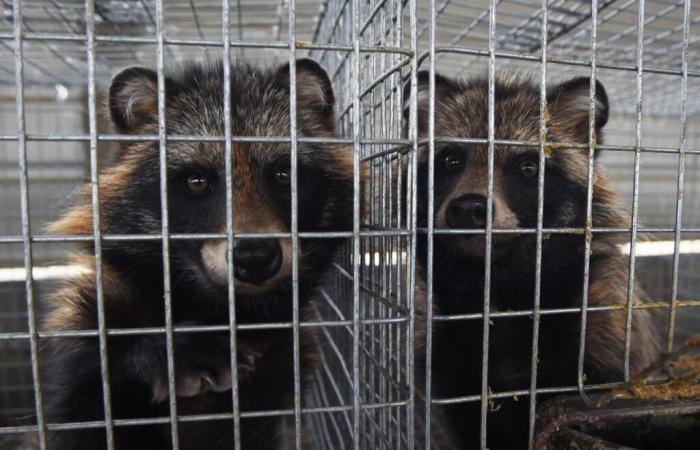A new study published by the American journal Cell has caused a stir in the scientific world. It places the origin of the COVID-19 pandemic in Wuhan, at the Huanan market, and suggests the involvement of several wild animals – raccoon dogs, civets, bamboo rats – as intermediate hosts and vectors of the disease before transmission to humans.
“SARS-CoV-2 was not the only virus with zoonotic potential present on the market at the end of 2019,” reports Florence Débarre, one of the authors of the study, to Le Parisien. The team of researchers, who studied the DNA of these animals positive for Covid19 and compared them to those of other animal markets, found in particular the avian flu H9N2, but also canine and hedgehog coronaviruses.
Markets that increase the risk of virus spread
“We have known for a very long time that the sale of live animals in markets represents a very significant risk (…) of contaminating humans,” adds research director and virologist Étienne Decroly. When several different species are sold at the same rate, the risk is increased, because the number of potential intermediate hosts increases.
In these markets, where freshly slaughtered meat is bought but where unsanitary conditions are sometimes the order of the day, “the close proximity between people and various stressed, weakened, sometimes even sick animals, offers ideal conditions for viruses that are often very adaptable” recalled the WWF website in 2020.
So many criteria that favor transmission to humans. “The problem with the sale of wild animals captured in the wild is that their legal or illegal sale is carried out without prior medical control,” adds the WWF website.
Captured in the wild and victims of a drastic reduction in their habitat, some animals also discover promiscuity with humans for the first time. Pathogens can then easily appear. Sweden, for example, has seen a sharp increase in the number of ticks carrying meningitis in 2023 with the decline in deer.
A very lucrative business in East Asia
Despite the harsh toll of the past (and the 800 deaths and 8,000 cases of SARS already known in 2003, largely in China), wild animal markets (also called “wet markets”) remain commonplace in Latin America and East Asia: Vietnam, Hong Kong, Thailand, Japan, etc.
In 2020, in the midst of the Covid-19 epidemic, China committed to banning the consumption and trade of certain wild land animals such as pangolins and civets, if they do not come from breeding farms. But stopping an industry that brings in, according to the Chinese Academy of Industry, nearly 100 billion euros per year and supports 14 million people is not easy. And wildlife trafficking is far from having disappeared. Temporarily closed in 2020, the Huanan market was quickly reopened, like other Chinese “wet markets”.
In the United States, it is the live chicken markets that are causing fears of infections, with avian flu at the forefront. According to the New York Times, New York has about 70 sites selling live animals (chickens, sheep, pigs, etc.), sometimes located near schools. All are supposed to carry out checks and disinfection several times a year.
In the northeastern United States, “about 25 million birds are sold in live markets each year …,” says Ann Linder, associate director of the Animal Law and Policy Program at Harvard. “We use and consume animals here at higher levels than almost any other country in the world,” she said.






